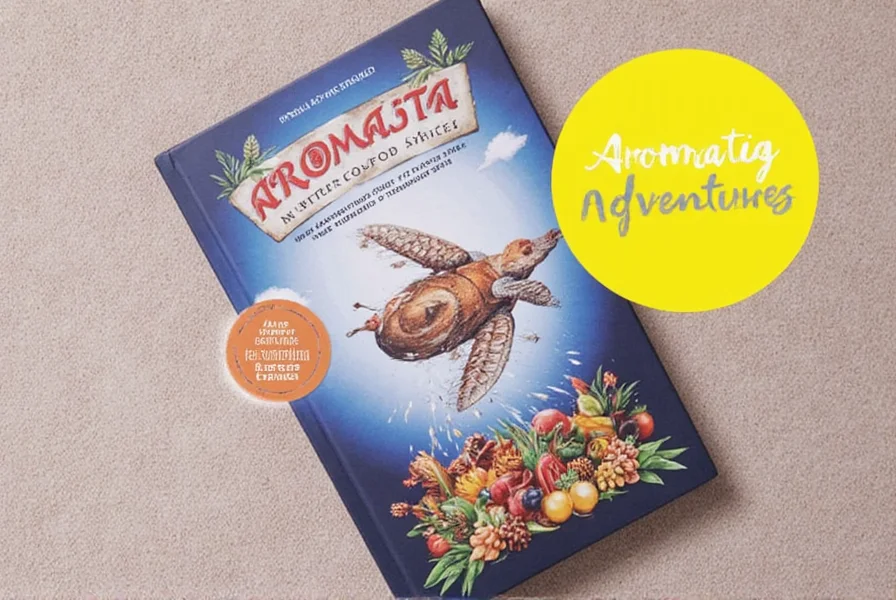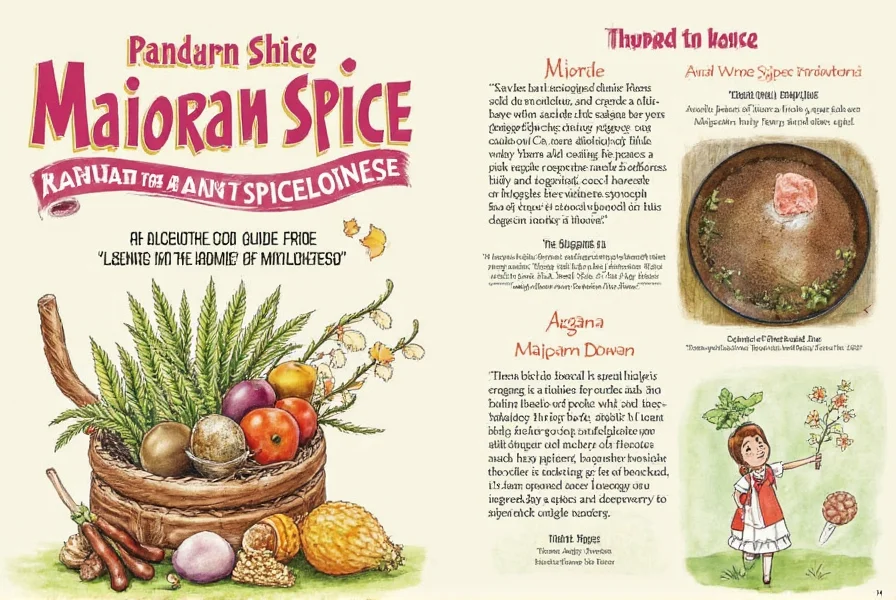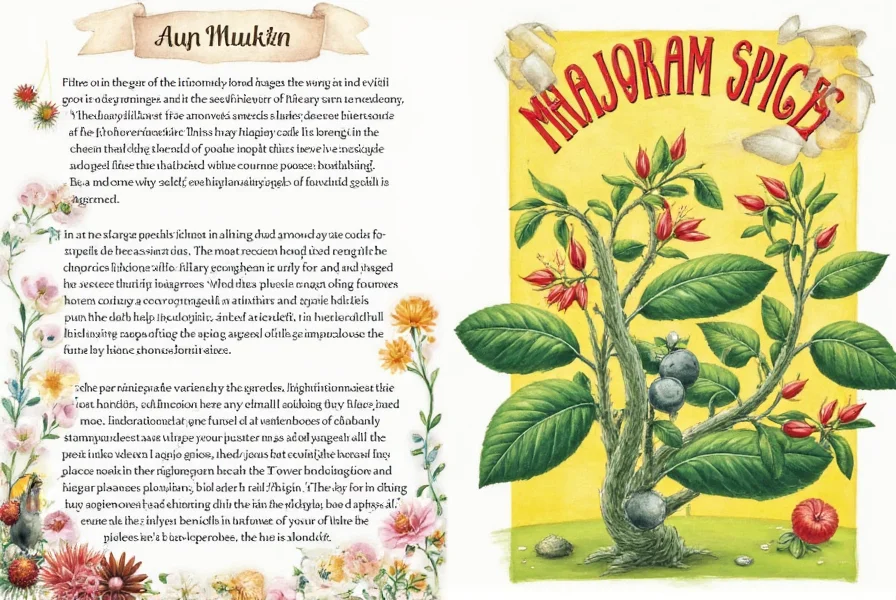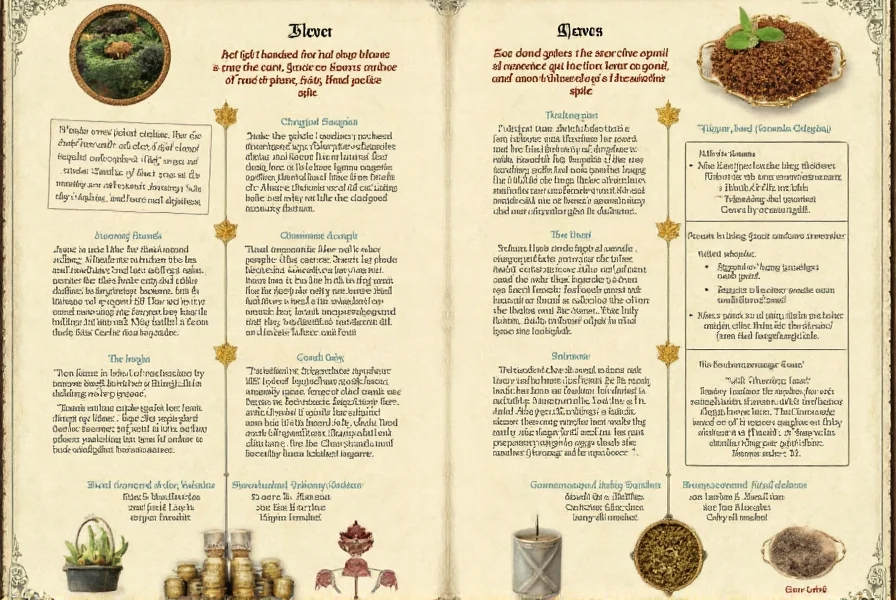Table of Contents
What is Marjoram (Majoram)?
"Majoram" is a common misspelling of "marjoram"—the correct name for this fragrant herb. Marjoram (Origanum majorana) belongs to the mint family and is closely related to oregano and thyme. Unlike its cousin oregano, which is more pungent, marjoram has a milder, sweeter flavor with subtle citrus and anise notes. It's widely used in Mediterranean and Middle Eastern cuisines, often added to tomato-based dishes, soups, and herb blends.

Marjoram is typically harvested before flowering for optimal flavor. While fresh marjoram is available seasonally, dried marjoram is more common in grocery stores. Note that "majoram" is a frequent search misspelling, but the herb is properly called "marjoram."
The Flavor Profile of Marjoram
Marjoram delivers a delicate, floral aroma with gentle sweetness. It complements rather than dominates dishes, making it ideal for subtle flavor enhancement. Below is a comparison with similar herbs:
| Spice | Flavor Notes | Best Used In |
|---|---|---|
| Marjoram | Sweet, citrusy, slightly anise-like | Tomato-based dishes, soups, stews, and sauces |
| Oregano | Pungent, earthy, slightly bitter | Italian cuisine, pizza, grilled meats |
| Thyme | Elegant, woody, slightly lemony | Herb blends, roasted vegetables, meat dishes |

Marjoram pairs exceptionally well with acidic ingredients like tomatoes and wine-based sauces. Its versatility makes it a favorite for both simple weeknight meals and gourmet dishes.
Culinary Uses and Tips for Using Marjoram
Use marjoram to add refined flavor without overpowering other ingredients. Follow these practical tips:
- Cooking with Marjoram: Add it to tomato-based dishes like lasagna, marinara, or ratatouille. Its sweetness enhances natural tomato flavors.
- Herb Blends: A key component of herbes de Provence. Combine with thyme, rosemary, and oregano for complex flavor profiles.
- Infused Oils: Steep dried marjoram in olive oil for salad dressings or bread dipping.
- Meat Dishes: Perfect for lamb, chicken, or pork. Add it toward the end of cooking to preserve its delicate aroma.
- Baked Goods: Use in savory flatbreads or cheese-based pastries for a unique twist.

Always add marjoram near the end of cooking. For dried marjoram, crumble between fingers before use to release oils.
Buying Guide: How to Choose the Best Marjoram Spice
Quality varies significantly. Follow these guidelines:
Types of Marjoram
- Dried Marjoram: Look for dark green, plump leaves with no discoloration. Ideal for most recipes.
- Fresh Marjoram: Available at farmers' markets. Choose vibrant green leaves with strong, pleasant aroma.

Key Features to Look For
- Origin: Mediterranean-sourced (France or Greece) typically offers superior quality.
- Processing: Avoid fillers. High-quality marjoram has a clean, distinct scent.
- Brand Reputation: Choose transparent brands specializing in herbs.
Recommended Products
- Mediterranean Harvest Marjoram: Rich flavor, ideal for cooking.
- Organic Marjoram by Green Leaf Herbs: Premium organic option for teas or infusions.

How to Store Marjoram for Maximum Freshness
Proper storage preserves flavor:
- Dried Marjoram: Keep in an airtight container away from light and moisture. Store in a cool, dark pantry.
- Fresh Marjoram: Wrap in damp paper towel, place in a resealable bag, and refrigerate for up to 7 days.

For best results, use within 3-4 weeks of opening. Flavor fades significantly over time.
Frequently Asked Questions About Marjoram
Common questions about marjoram:
- Is 'majoram' the correct spelling of this herb?
- 'Majoram' is a common misspelling. The correct term is 'marjoram' (Origanum majorana).
- Is marjoram the same as oregano?
- No. Marjoram is sweeter and milder; oregano is more pungent and bitter. They're related but distinct herbs.
- Can I substitute oregano for marjoram in recipes?
- Yes, but use 50% less oregano due to its stronger flavor. Adjust to taste.
- How much marjoram should I use in a recipe?
- Start with 1 teaspoon dried marjoram per serving. Add more only if needed—its flavor is delicate.
- Where can I buy marjoram spice?
- Available in spice aisles of grocery stores, specialty food shops, and online retailers. Fresh marjoram is seasonal at farmers' markets.
- What are good substitutes for marjoram?
- Oregano (use half the amount), thyme, or a thyme-basil blend work well in most recipes.

Conclusion
Marjoram (often misspelled as 'majoram') is a versatile culinary herb that elevates dishes with its sweet, citrusy flavor. From Mediterranean stews to herb blends and infused oils, it adds sophistication without overpowering other ingredients.
Whether you're a home cook or professional chef, mastering marjoram's uses and storage ensures consistent flavor in every dish. Its subtle complexity makes it a timeless addition to any kitchen.












 浙公网安备
33010002000092号
浙公网安备
33010002000092号 浙B2-20120091-4
浙B2-20120091-4